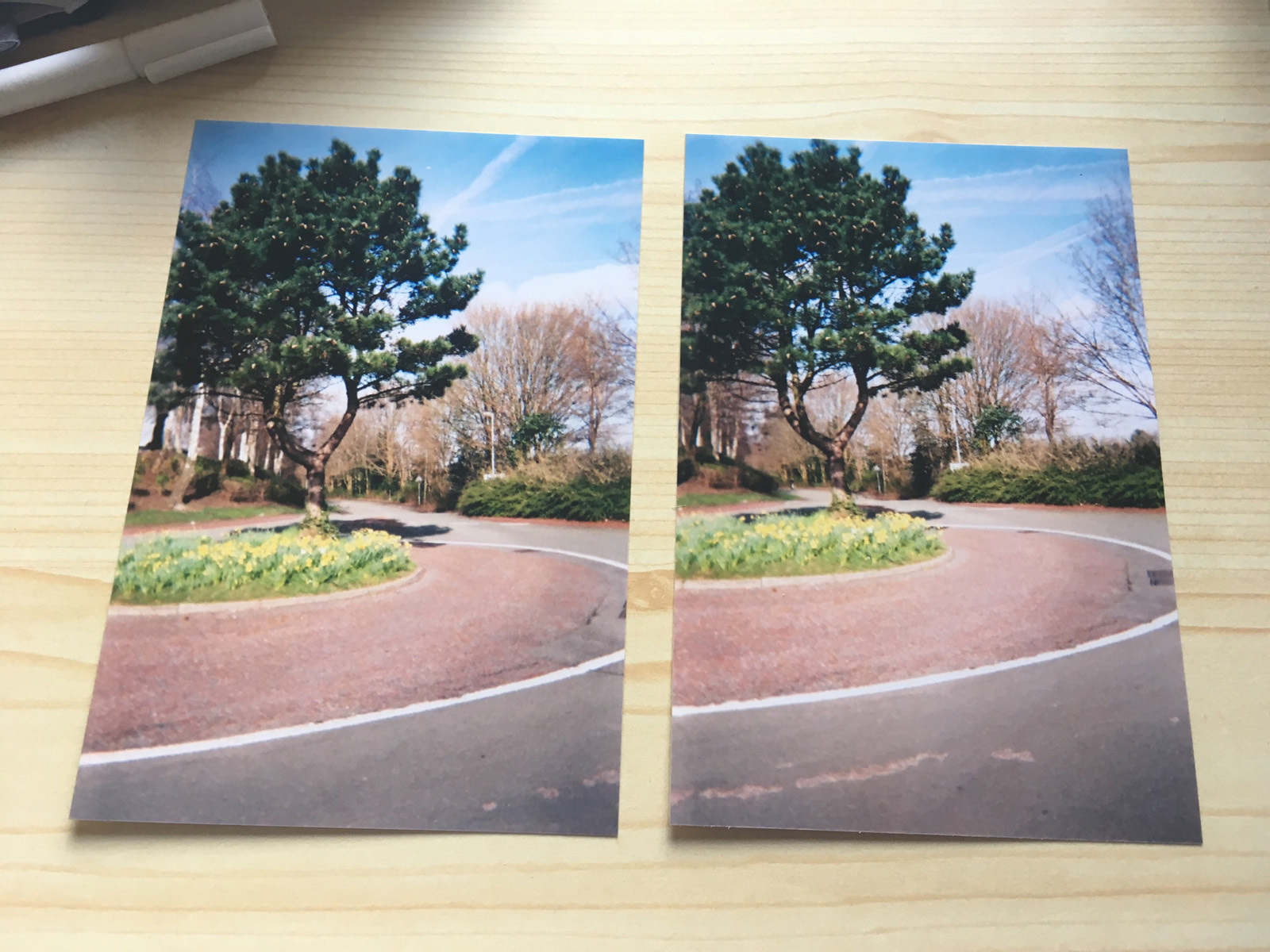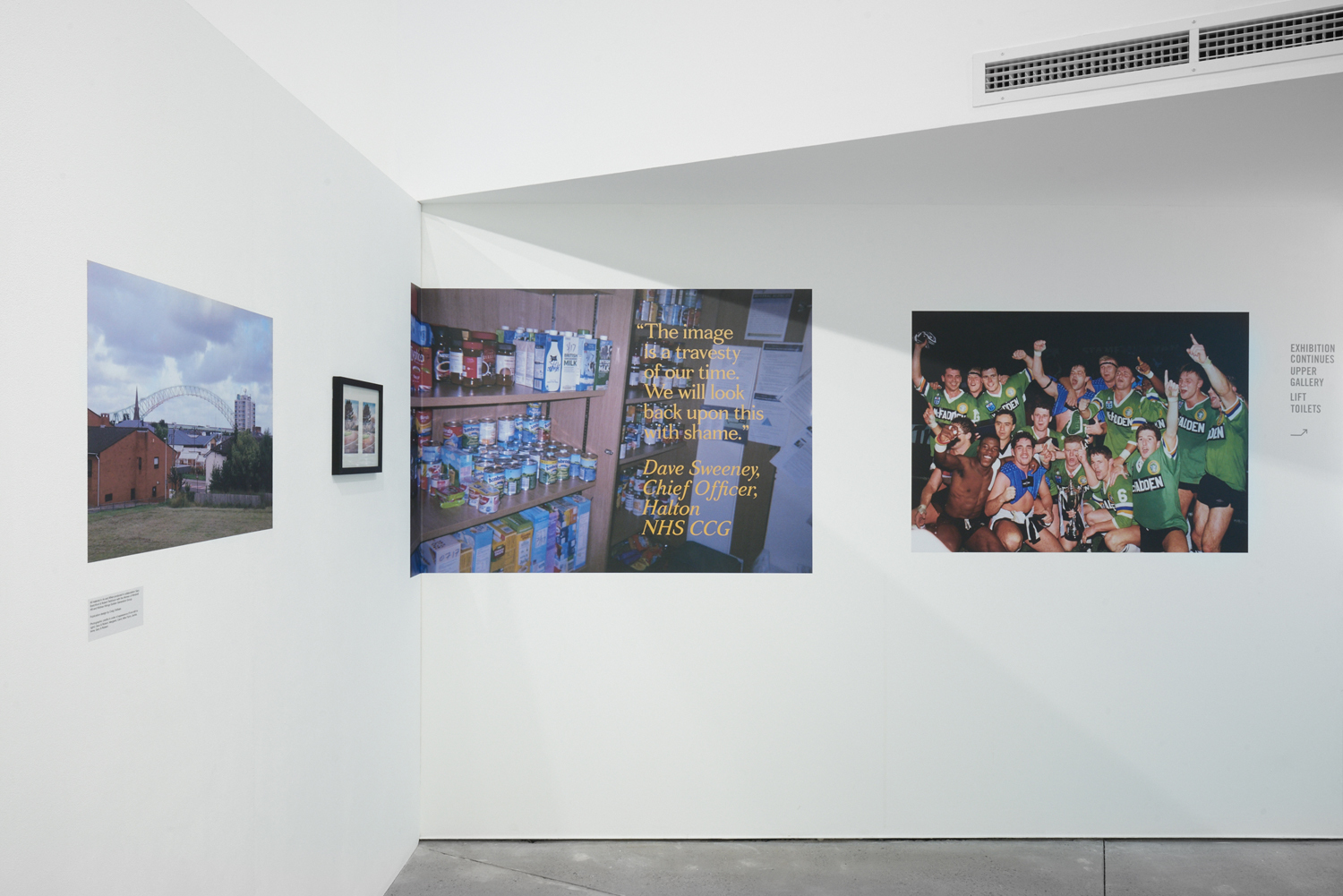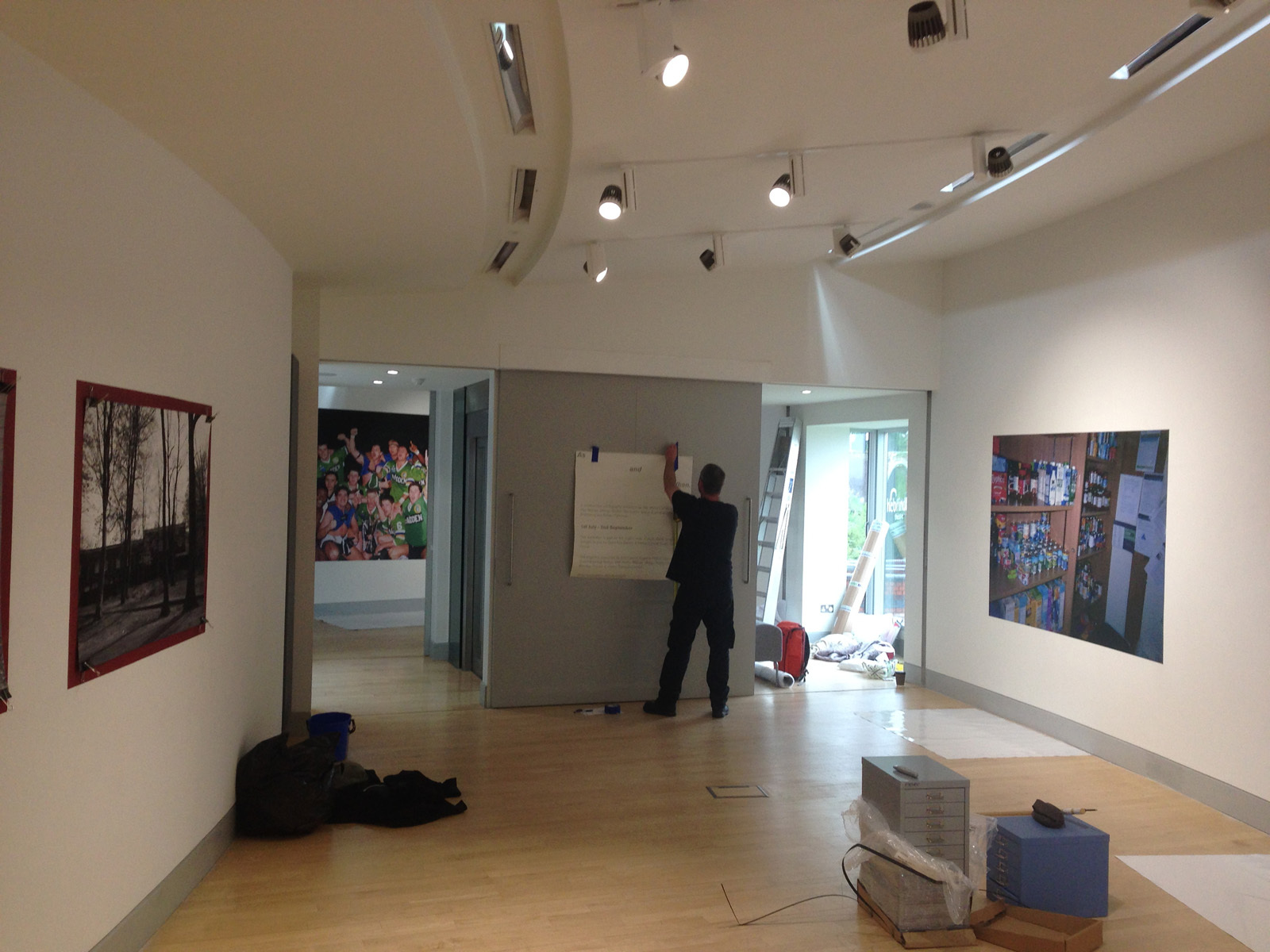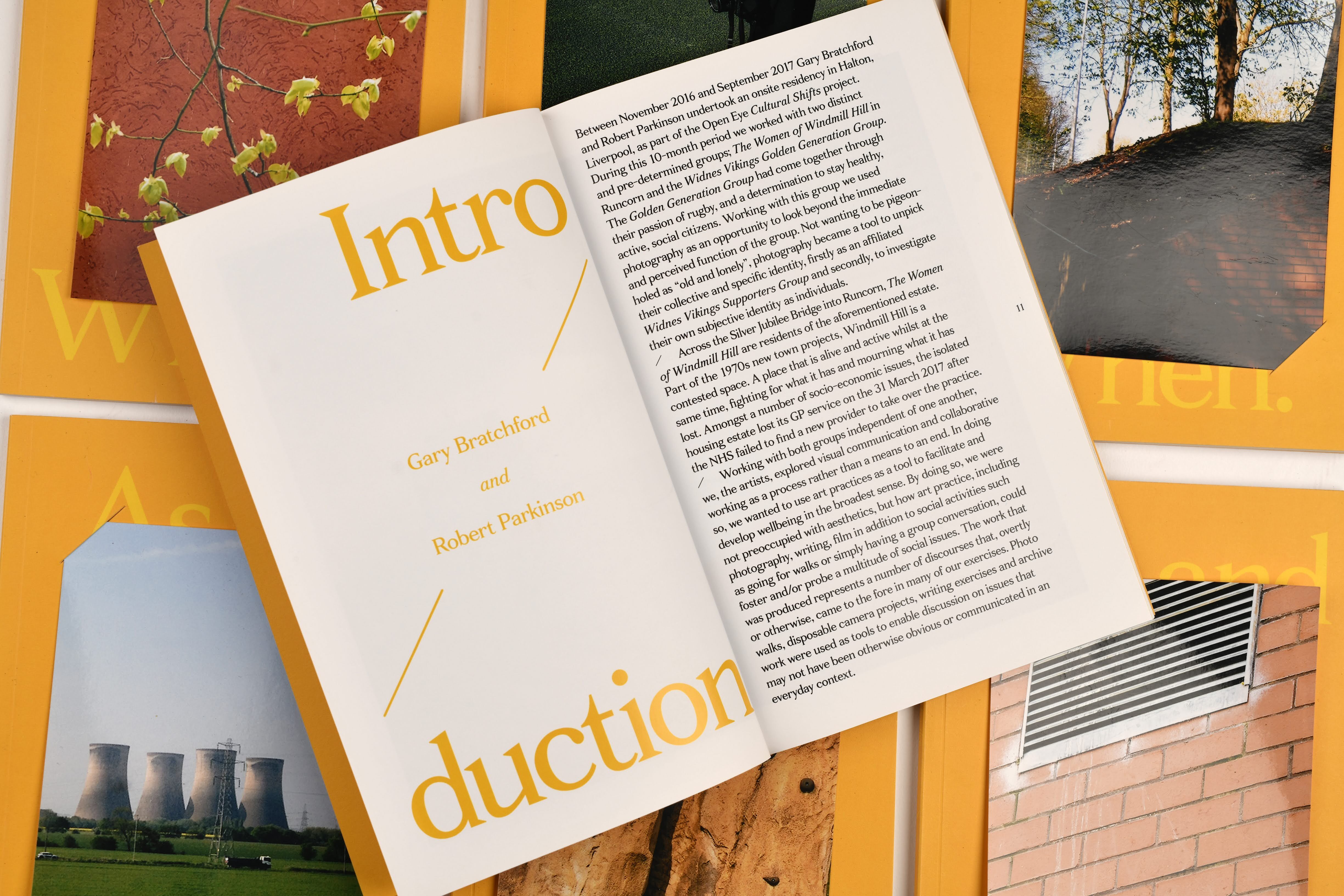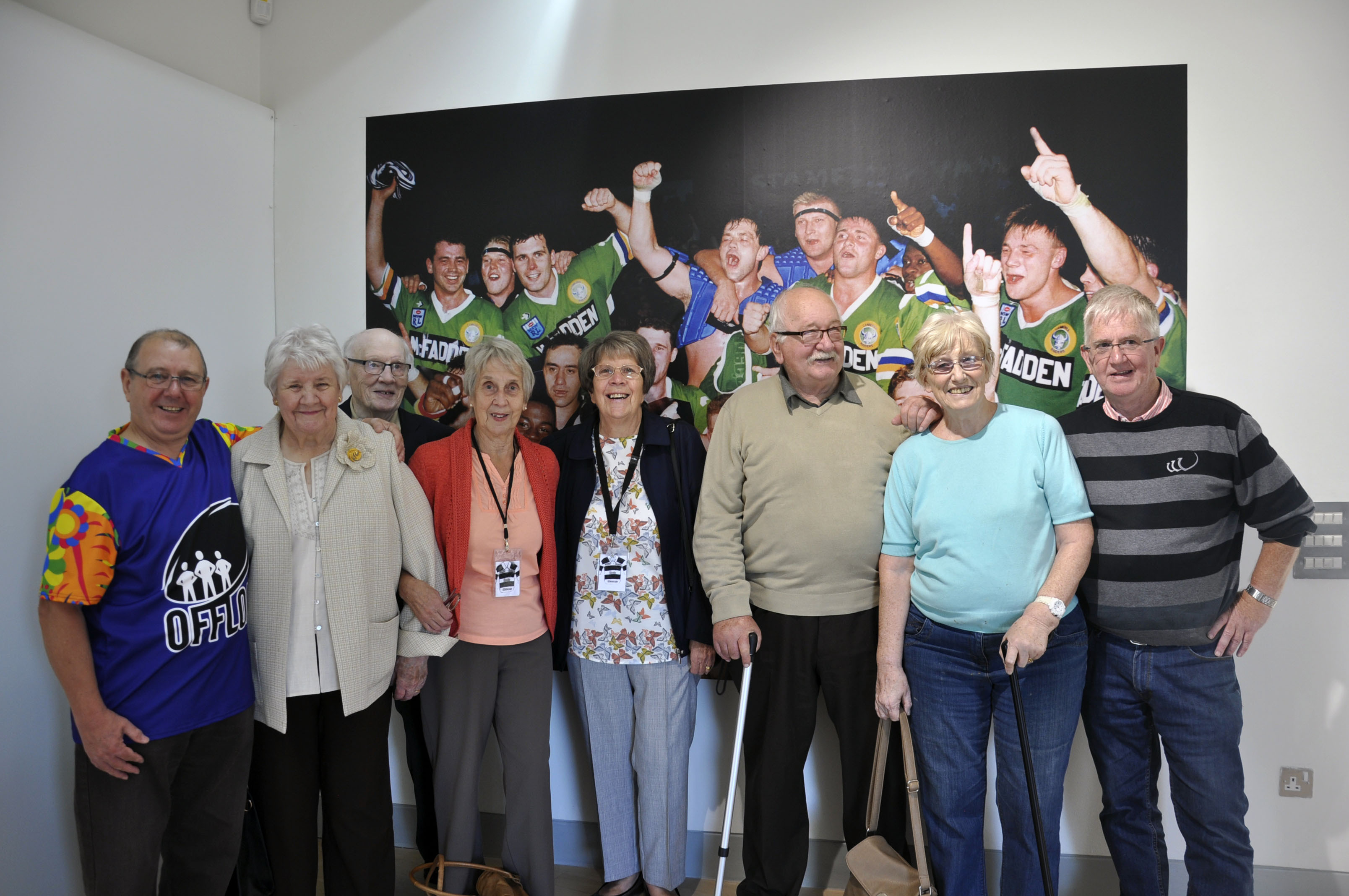Between November 2016 and September 2017 Gary Bratchford and Robert Parkinson undertook an onsite residency in Halton, Liverpool, as part of the Open Eye Cultural Shifts project. During this 10-month period we worked with two distinct and pre-determined groups; The Women of Windmill Hill in Runcorn and the Widnes Vikings Golden Generation Group. The Golden Generation group had come together through their passion of rugby, and a determination to stay healthy, active, social citizens. Working with this group we used photography as an opportunity to look beyond the immediate and perceived function of the group. Not wanting to be pigeon-holed as ‘old and lonely’, photography became a tool to unpick their collective and specific identity, firstly as an affiliated Widnes Vikings Supporters Group and secondly, to investigate their own subjective identity as individuals.
Across the Silver Jubilee Bridge into Runcorn, The Women of Windmill Hill are residents of the aforementioned estate. Part of the 1970s new town projects, Windmill Hill is a contested space. A place that is alive and active whilst at the same time, fighting for what it has and mourning what it has lost. Amongst a number of socio-economic issues, the isolated housing estate lost its GP service on the 31 March 2017 after the NHS failed to find a new provider to take over the practice.
Working with both groups independent of one another, we, the artists, explored visual communication and collaborative working as a process rather than a means to an end. In doing so, we wanted to use art practices as a tool to facilitate and develop wellbeing in the broadest sense. By doing so, we were not preoccupied with aesthetics, but how art practice, including photography, writing, film in addition to social activities such as going for walks or simply having a group conversation, could foster and/or probe a multitude of social issues. The work that was produced represents a number of discourses that, overtly or otherwise, came to the fore in many of our exercises. Photo walks, disposable camera projects, writing exercises and archive work were used as tools to enable discussion on issues that may not have been otherwise obvious or communicated in an everyday context.
